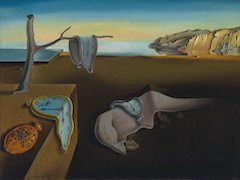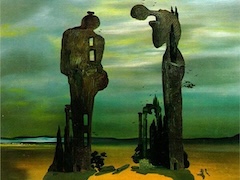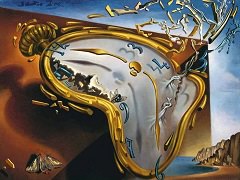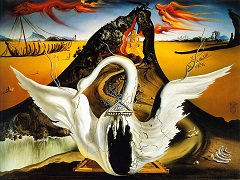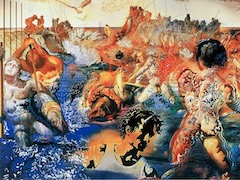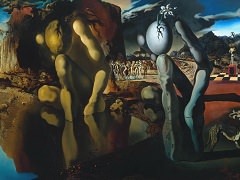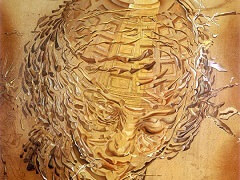Palladio's Corridor of Thalia, 1937 by Salvador Dali
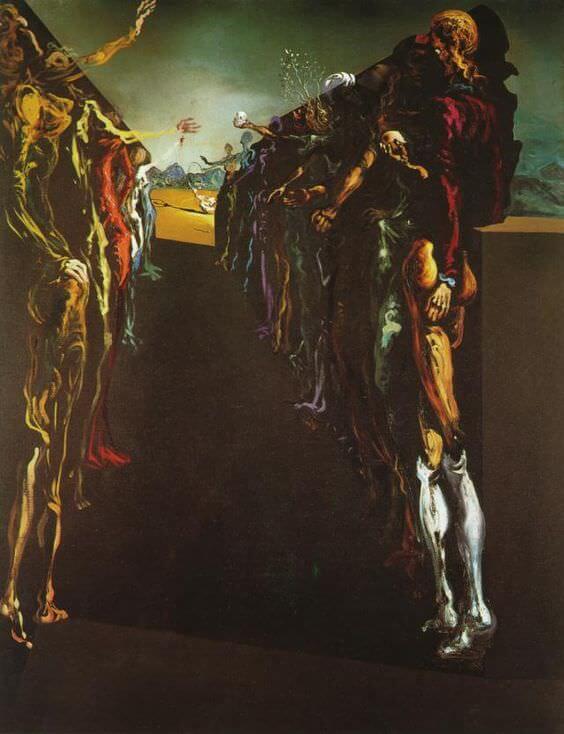
During the late 1930s Dali spent long periods in Italy, where he made a careful study of Renaissance art. Among the masterpieces of the 16th century architect Andrea Palladio was the Teatro Olimpico in Vicenza, in which both the theatre and the stage sets were modelled on ancient Roman examples. Here Dali has devised an equivalent to Palladio's elaborate perspective effects by creating a receding corridor of human (if spectral) figures.
The scene is divided into starkly contrasted dark and light areas, so that the corridor leads to the strongly lit figure of a girl playing with a skipping rope or hoop. This image had already appeared in Suburb of a Paranoiac-Critical Town, and was based on a childhood memory of Dali's cousin. Despite the innocent nature of her play, he somehow manages to make both the girl and her shadow as sinister as everything else in this curiously disturbing picture. Thalia was one of the nine Muses.

